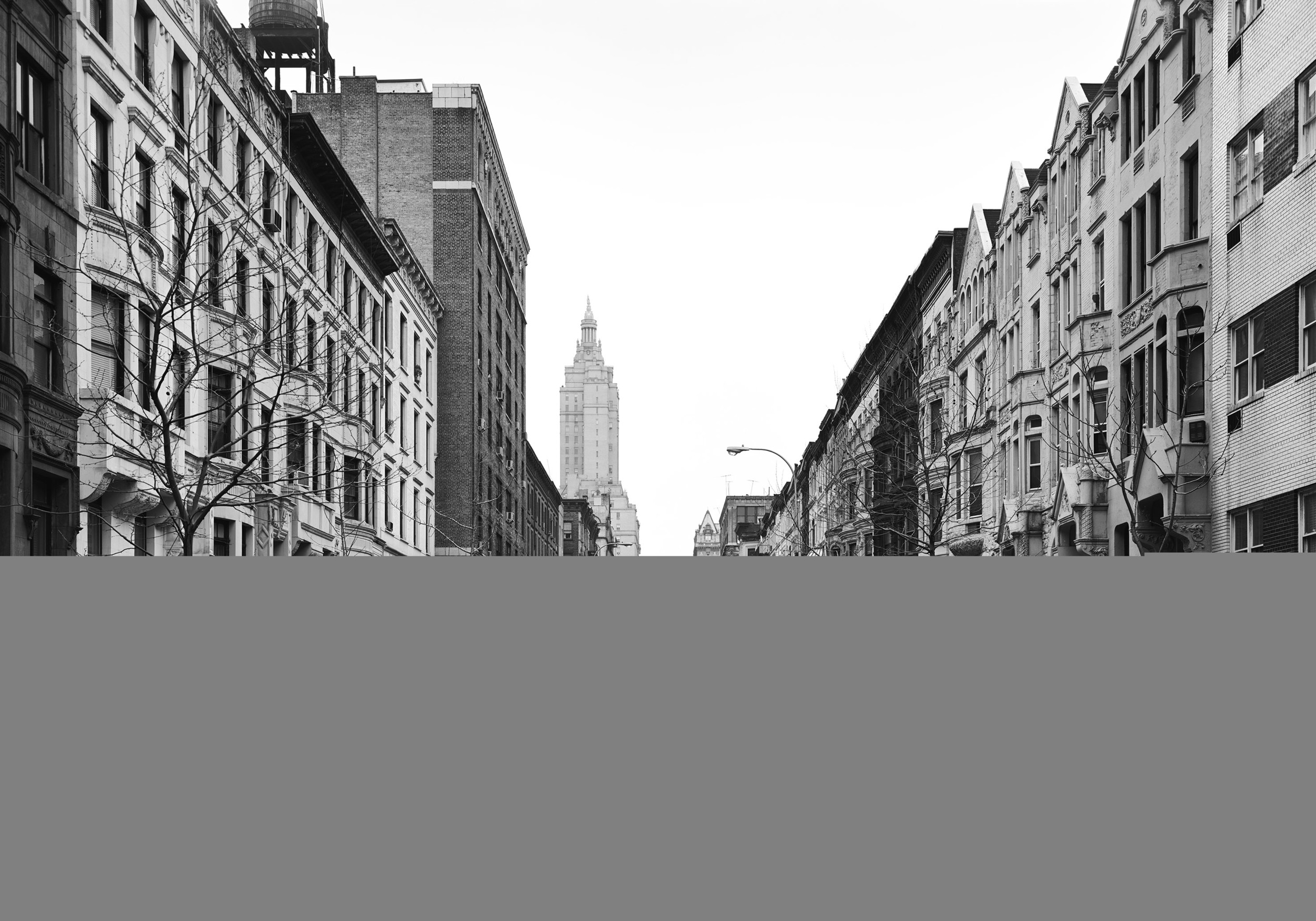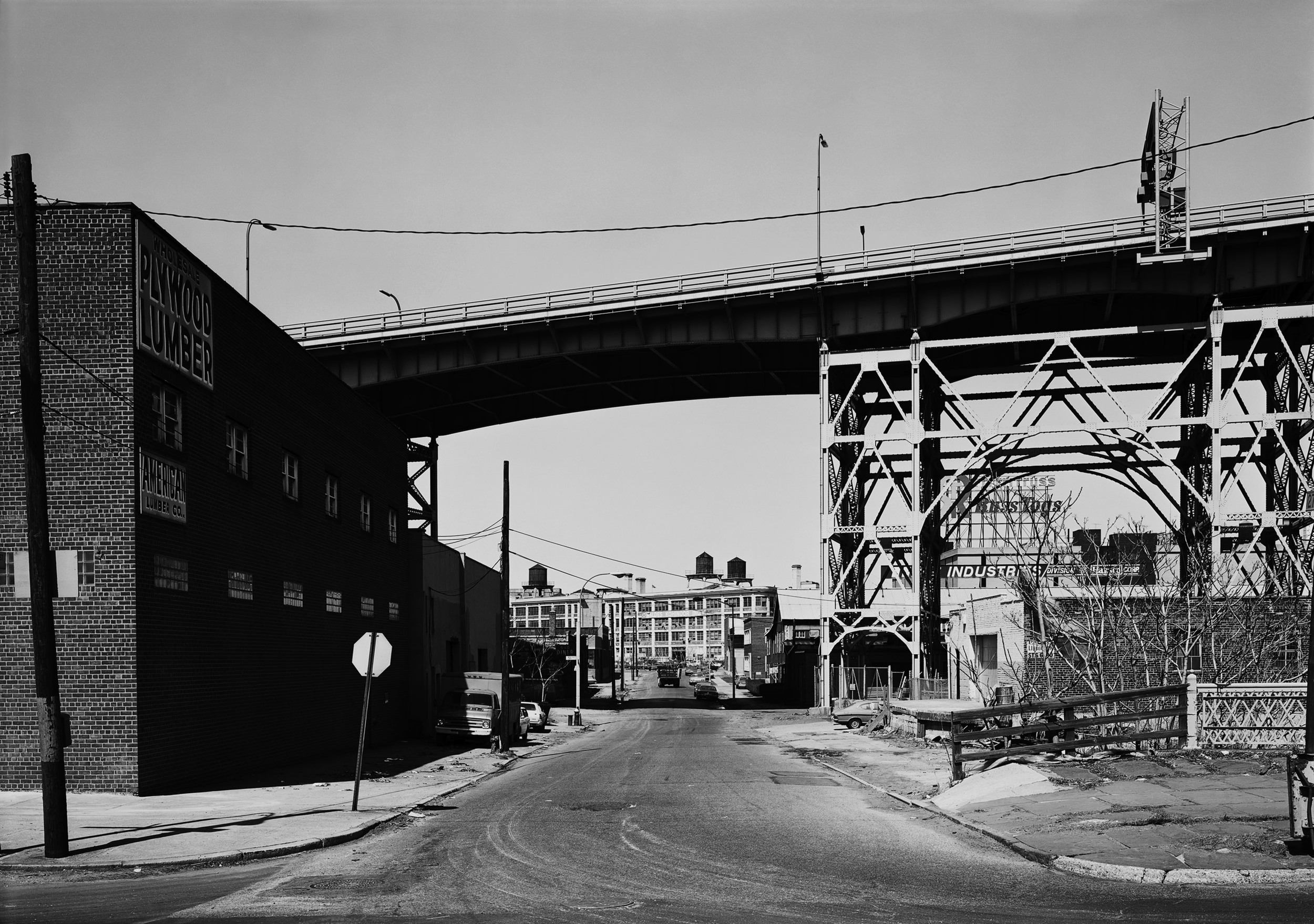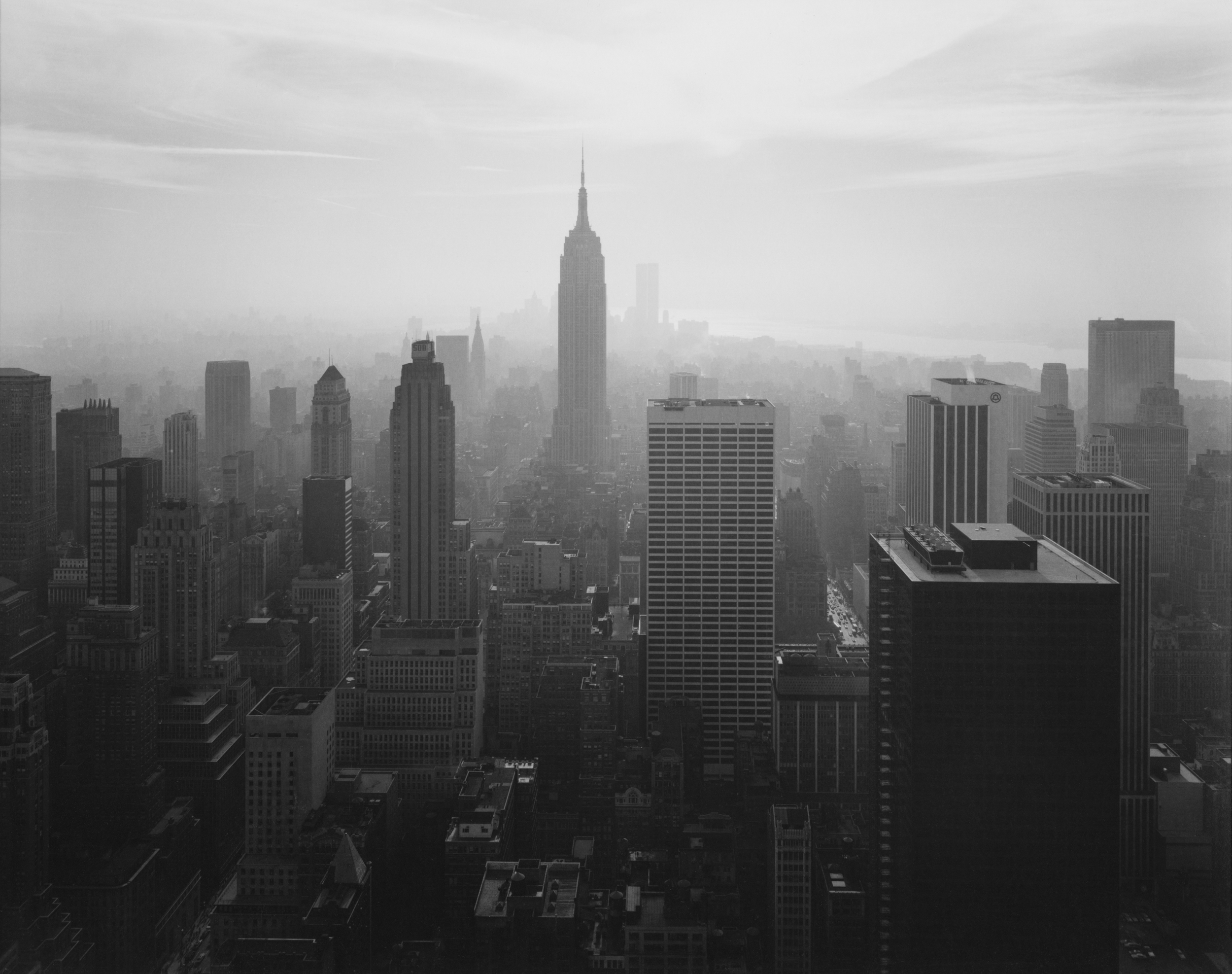Image above: ©Nicholas Nixon, North View from Battery Park, New York City, 1975, gelatin silver print, 20 x 24 inches, 50.8 x 61 cm, Edition of 10 / Courtesy Fraenkel Gallery, San Francisco
Senior & Shopmaker Gallery is pleased to present New York Topographics, a group exhibition featuring photographs of New York City by Bernd and Hilla Becher, Nicholas Nixon, and Thomas Struth.

A term coined by curator William Jenkins in 1975, “New Topographics” described a group of landscape photographers, Nixon and the Bechers among them, whose pictures had an elegantly banal aesthetic. Jenkins’ exhibition at the George Eastman House in Rochester, New York titled New Topographics: Photographs of a Man-Altered Landscape brought to the fore the work of photographers who challenged the ideology of America’s longstanding myths of nature and the West. Rigorously formal, predominantly black-and-white prints of city streets, warehouses, industrial sites, and suburban housing stood in stark contrast to a tradition of idealized landscape photography heretofore practiced by artists such as Ansel Adams and Edward Weston.

Nicholas Nixon (American b. 1947), like his peers Robert Adams, Lewis Baltz, and Stephen Shore, turned his lens on the built environment of 1970s urban America, specifically his native Boston and New York City. Whereas his later work focused on portraiture, Nixon’s cityscapes are devoid of people. From rooftop vantage points, he chronicled the density and complexity of urban development. Unlike the cropped typologies of Bernd and Hilla Becher, Nixon’s images are expansive, capturing from a distance the mass of the city against its vast skyline.

Bernd and Hilla Becher (German, 1931-2007; 1934-2015) photographed disappearing industrial architecture around Europe and North America for over fifty years, forging the medium’s connection to Minimal and Conceptual art movements. Shot in an austere, documentary style and often organized in grids, their images of water towers, gas tanks, and factories are immediately recognizable and decisively influenced generations of their students at the Kunstakademie Dusseldorf, Thomas Struth (German, b. 1954) among them. With a scholarship from the Academy, Struth traveled to New York in 1977, photographing over a six-month period the desolate neighborhoods of Tribeca, Wall Street, Soho, and the outer boroughs. With the same dispassionate approach of his mentors, Struth catalogued in topographical detail and wide perspective the streets of the city. Common to all the images made over this period is a clear geometry and centralized viewpoint, with shots taken at eye level in the center of the street.
For further information, please contact Betsy Senior, Laurence Shopmaker, or Tyler Haughey at 212-213-6767 or at gallery@seniorandshopmaker.com.




